By: Janne Pohjoispää
In May 2010 the Russian Ministry of Defence launched a program for developing the new assault rifle for the Russian armed forces. Afterwards it’s been speculated that the original goal of that program was to replace the AK-74-type assault rifle with the AEK-971 rifle, which was developed by the Kovrov arms plant. This project was a part of the Russian army Ratnik program that’s the comprehensive individual soldier equipment system.
According to public information, Izmash started the AK12 development from scratch, but it’s likely based on earlier work developed in Ishevsk in decades past. The project was originally known as the AK200 and its goal was to get the rifle included into the Russian Army Ratnik program. The AK200 type rifle included certain features like the hinged receiver, ambidextrous cocking handle, thumb operated safety, among others. Many of these features were not common with the standard AK rifles. Most of these features were rejected and the following AK400 rifle resembled the AK74. To make a long story short, the AK400 was adopted by the Russian armed forces as the AK12 in 5.45×39 and the AK15 in 7.62×39.

The Saiga TR3 is a semi-auto only version of the AK12/AK15. It shares most features with the AK12, but it bears some differences. It’s currently available in 5.45×39 and 7.62×39 calibers as well as in the 366 TKM (9.55×39) smoothbore caliber aimed primarily at the Russian domestic market.
RECEIVER AND BARREL
The receiver is a U-section of stamped 1.5 mm sheet steel and assembled by rivets and spot welds. The bolt rails are likely laser cut sheet steel parts riveted inside the receiver section. The barrel extension and rear trunnion are machined from steel and pinned to the receiver.
The receiver cover is stamped from sheet steel and it is basically similar to previous AK-variations. However, it’s mounted in a far different way. At the front end of the cover is a machined eyelet that fits into a recess on the gas tube base. The cover is locked in place with a cross pin that goes through the gas tube base. The rear end of receiver cover has machined steel hooks that fits the receiver rear trunnion. The receiver cover fitting is much tighter than that found on AK47/AKM/AK74 type rifles. The receiver cover mounting is far different from the standard AK because of how the optical sights mount on top of the receiver cover.
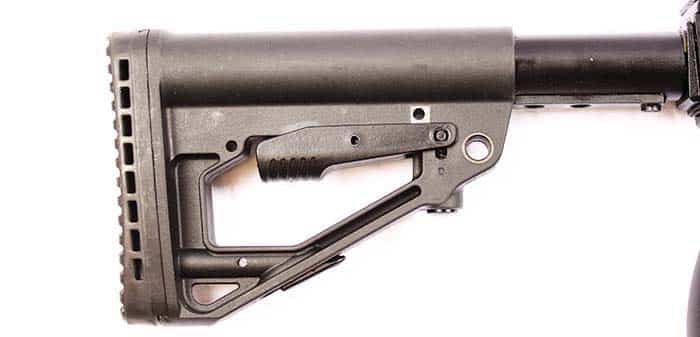
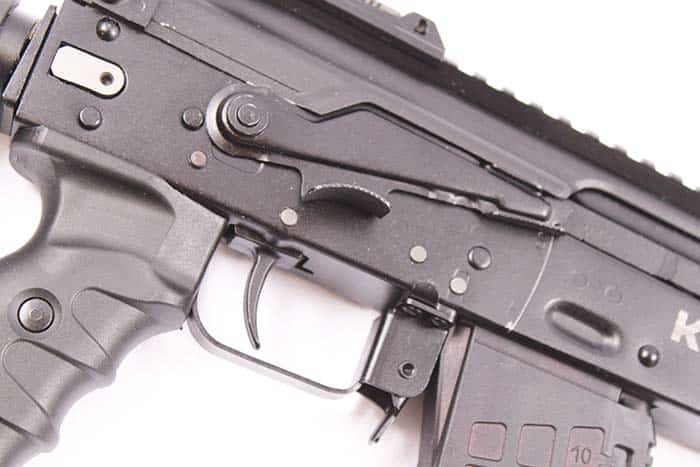
The barrel is mated on a barrel extension (trunnion) by threads. The barrel is a four groove model with a right hand twist and a 16.38 inch length (416 mm) as measured from muzzle to bolt face. The chamber and bore are chrome-plated. The twist rate was not measured or given with technical data, but the 5.45×39 caliber barrels have usually 1 turn in 200 mm (7.87 in) twist. In theory the barrel is free floating as the lower part of the forearm is mounted on the receiver, not on the barrel. However, the gas tube is fixed on the barrel, so the barrel is actually not free floating.
There is no muzzle thread, but the muzzle brake is mounted by rotating until it catches a QD lug and secured with a spring-loaded plunger.
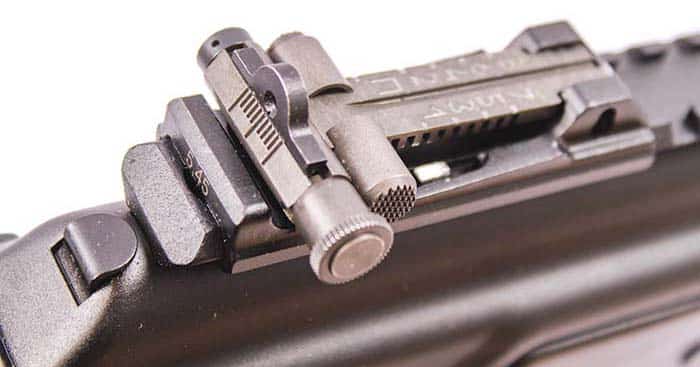
BREECHBLOCK AND TRIGGER
The bolt carrier and bolt are of the basic AK-type with a long stroke gas piston. Even as it’s intended for the 5.45 mm cartridge, its weight and dimensions are similar to an 7.62 mm AK. However, the 5.45 mm and 7.62 mm parts are not interchangeable. The gas piston is chrome-plated and it has no circular grooves like the AK47or the AKM. Like the AK military versions, the TR3 bolt has a floating firing pin. The bolt handle is on the right side of receiver and it’s the same finger-hook type as used with the AK rifles.
The trigger mechanism is a basic AK-type in semi auto configuration and there’s no auto sear or even a place for it. The trigger is two-stage with a pull weight of 4.2 pounds. The safety lever operation is of the basic AK type and the lever has second shelf for easier access. The safety lever is similar to the Krebs Enhanced Safety.
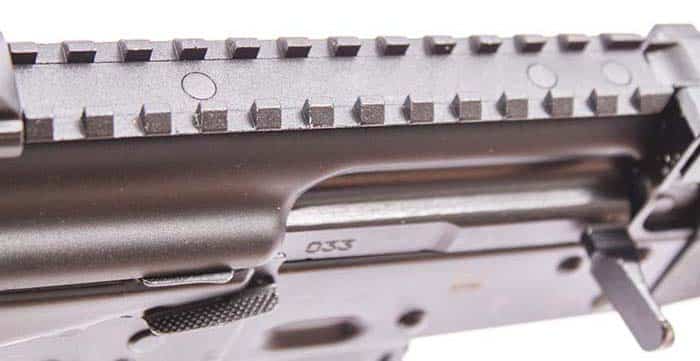
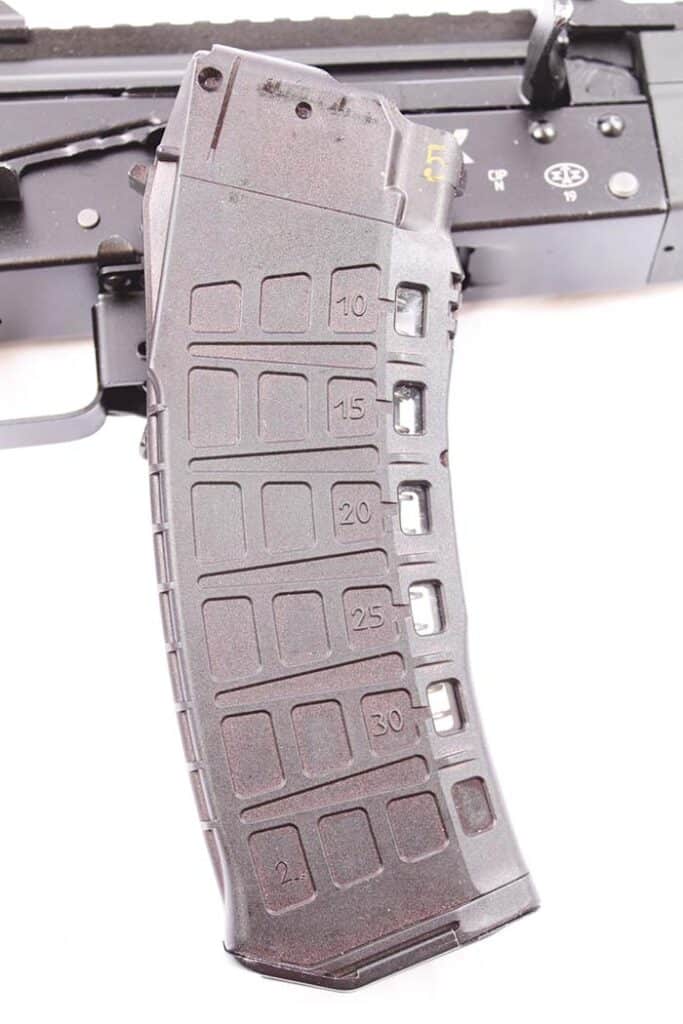
FURNITURE
The buttstock is both collapsible and folding. The buttstock length of pull has 4 positions from 10.7 to 13.2 inches (273 to 335 mm). The buttstock and its tube look similar to those of the AR15, but the dimensions are different and the parts are not interchangeable. A rubber recoil pad is fixed on a removable buttplate that covers a compartment inside the stock tube. The stock is held open with a spring-loaded button/latch located at the rear of the left side of receiver.
The stock folds on the left side and it locks on the side by a spring-loaded hook. The stock hinge includes a mechanism that locks the trigger mechanism and prevents bolt and slide movement. There is no provision to fire the rifle with the stock folded; that feature is likely omitted to comply with Russian firearm laws.
The plastic pistol grip is ergonomically shaped with finger grooves and an ambidextrous thumb rest. The pistol grip has a removable core that stores an oil bottle and some tools.
The handguard is also made from plastic and it has two halves. The lower half is mounted on the receiver with a large cross pin. The upper half of the handguard is mounted on the lower half with a snap-on coupling. The handguard has fixed Picatinny rails on top and bottom. There is also a provision to mount short plastic rails.
SIGHTS AND MAGAZINE
The iron sights are more similar to the Valmet/Galil pattern than typical AK open sights. The front sight is mounted on the gas block. The front post is adjustable for elevation with a separate tool and it has protective ears. The rear sight is mounted on the rear of the receiver cover. The rear sight is anaperture type with sliding tangent adjustable from 100 meters up to 600 meters, and with a battle sight setting of 400 meters, marked with a Cyrillic ”P”. The rear sight is also adjustable for windage with 0.22 MRAD clicks. The adjustment mechanism is similar to the RPK rear sight. On the top of the receiver cover is a fixed Picatinny rail for mounting an optical sight.
The polymer magazine has a steel reinforced rear spine and front locking lugs. The magazine is a staggered row type and it is compatible with AK74 rifles. It has the size and shape of 30 round magazines, but its capacity is 10 rounds. Inside the magazine is a limiter made from heavy steel wire. The limiter is quite easy to remove; it’s likely there to meet current European Union gun legislation and perhaps Russian gun laws, too.
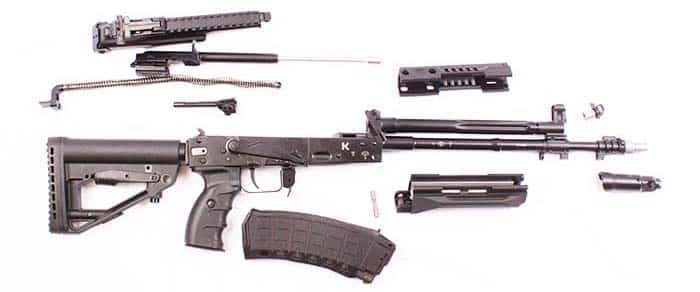
TEST FIRING AND HANDLING
For test firing of the 5.45×39 Saiga TR3, the only ammunition available was Barnaul 60-grain lead core FMJBT. Shooting from a sandbag support with iron sights at an outdoor range in snowy conditions and 14°F (-10°C) temperature, produced 3.6 MOA groups while shooting seven, 5-rounds groups. That’s not the best the AK platform can produce but the TR3 produced groups typical of many AKs.
In addition to accuracy testing, the Saiga TR3 saw some faster shooting situations. The TR3 performed well in fast, close range situations. It’s easy handling and fast shooting. With double taps, it was easy to keep the sights on target. The safety selector was stiff, but the rifle was also brand new. A feature that makes the safety selector stiff is the mechanism that locks trigger and bolt when the buttstock is folded. The safety lever has a second shelf, similar to the Krebs safety. On the other hand, it makes safety manipulation easier with gloves on, but it may also catch on clothing or equipment.
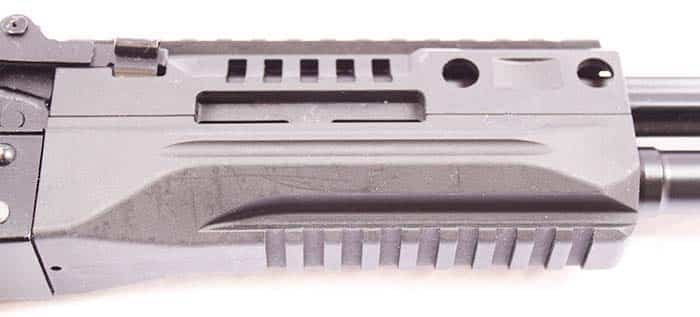
As previously noted, the iron sights were far from the familiar AK-style. The rear sight has a small diameter aperture that works well on bullseye targets, but the aperture is too small for quicker shooting. But, mount a red-dot up top, and the TR3 does much better.
The included 5.45 mm plastic AK magazine is bit trickier to fill than the 7.62 mm steel magazine. The magazine fit in the receiver is tight and requires more care to insert properly than with a 7.62 mm AK magazine.

Disassembly of the Saiga TR3 follows the usual AK sequence with few exceptions. The receiver cover is mounted differently and held in place by a cross pin at the front end of the cover. The gas piston tube is fixed and cannot be removed. But, for cleaning, it has a removable end plug.
There are no muzzle threads to mount a sound suppressor. However, the muzzle brake QD lug can be used to mount a sound suppressor. B&T make suppressors that mount on TR3’s QD lug.
The Saiga TR3 comes with cleaning kit, oil bottle, sight tool and one 10-round magazine. The Saiga TR3 isn’t the cheapest AK-type rifle available. In Europe the TR3 costs about 2,100 Euros; that is more than the price tag of the average AR15 rifle. Yet the TR3 is likely one of the best AK rifles currently available.
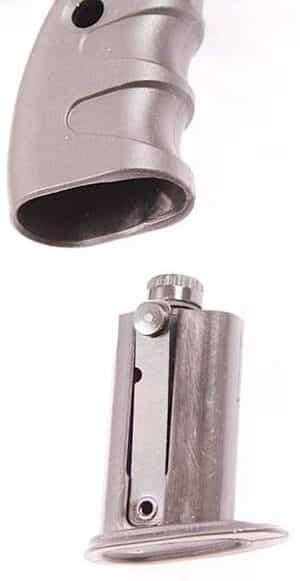
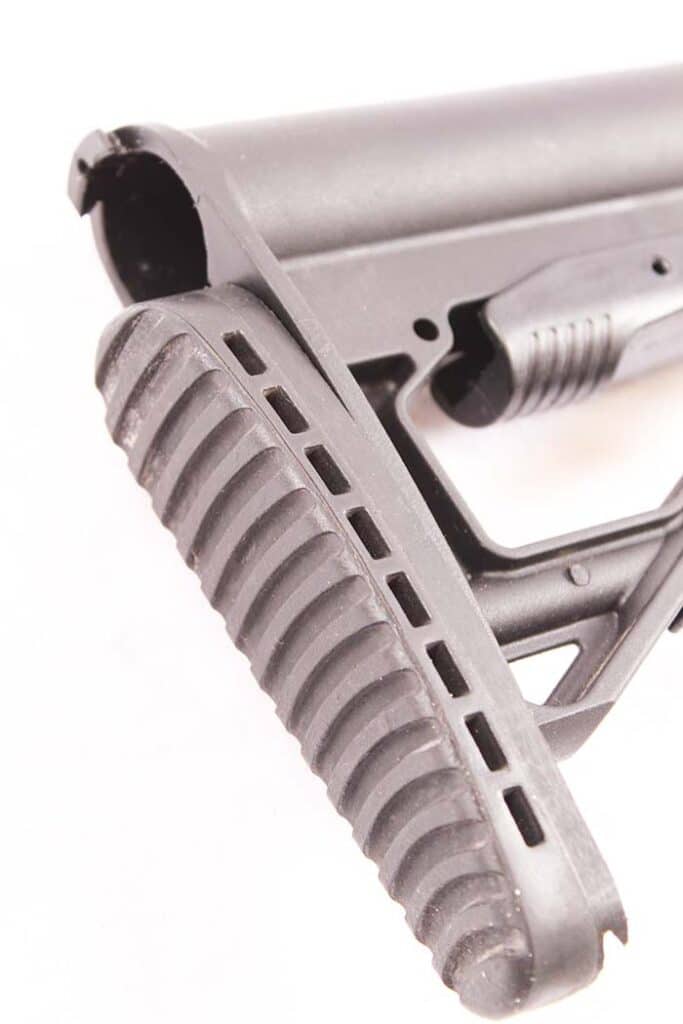
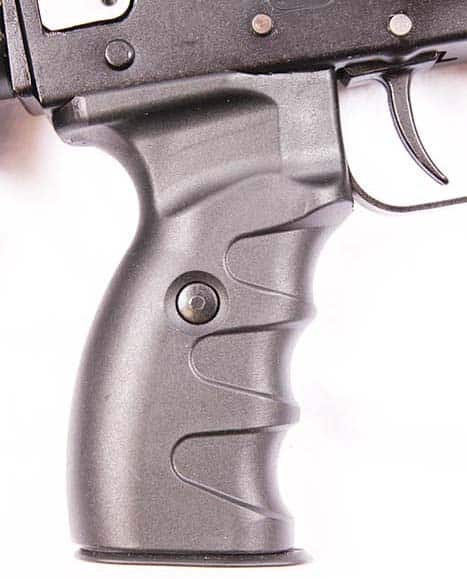
| This article first appeared in Small Arms Review V25N10 (December 2021) |












